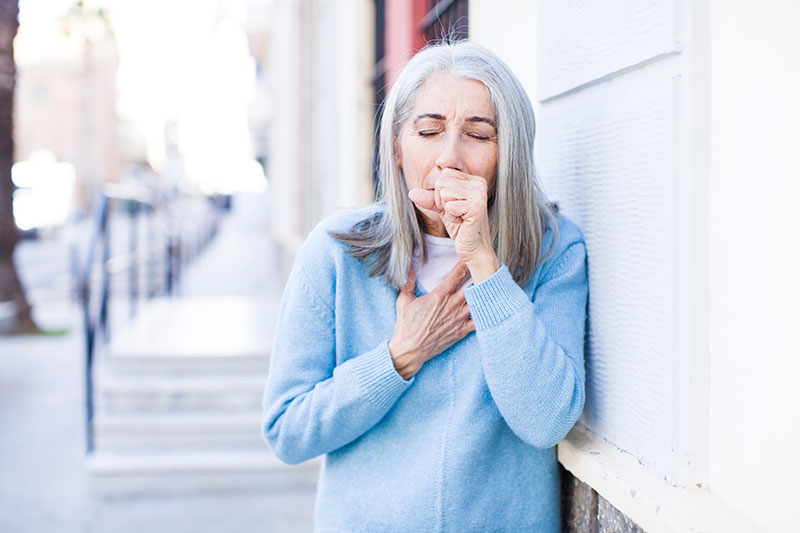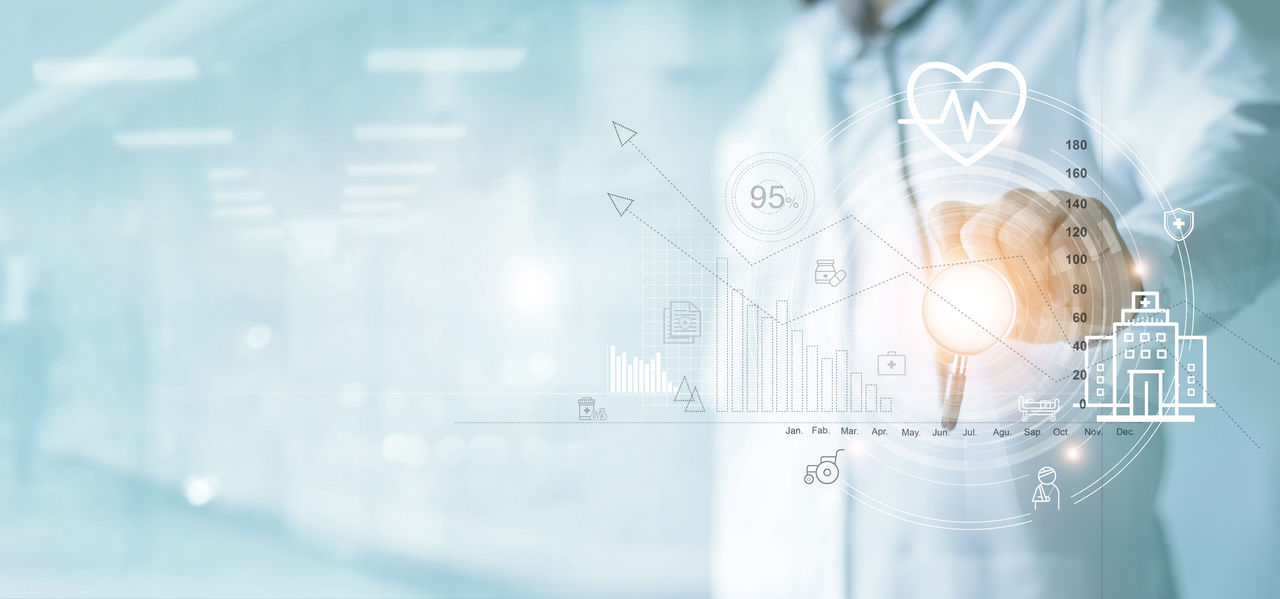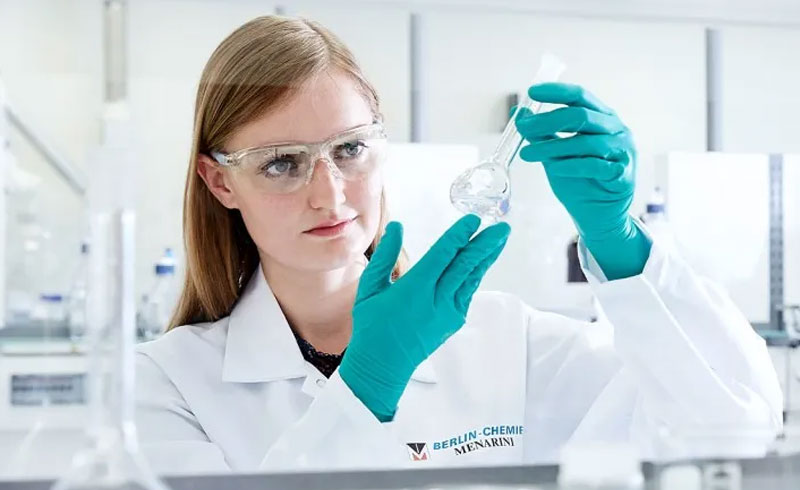Welcome to the News & More section. Here you will find general information in the form of press releases, news and the latest graphical material.
Chronic obstructive pulmonary disease (COPD)
What is COPD?
The abbreviation COPD stands for "Chronic Obstructive Pulmonary Disease". 6.89% of the population in Germany suffered from COPD in 2021 and it is estimated that there are over 380 million people with the disease worldwide.1,2
As the name suggests it is a slow-onset, progressive disease of the lung. It causes permanent inflammation and constriction (narrowing) of the airways. It is frequently associated with hyperinflation of the lungs (emphysema).
What causes COPD?
There are several reasons why COPD develops. One of the most significant risk factors is smoking. However it is now known that around 20-30 percent of people with COPD have never smoked.3 COPD can also have a genetic basis (e.g. congenital enzyme deficiency) or events in infancy such as premature birth or frequent infections may also have been factors. Another risk factor for COPD is environmental influences such as air pollutants.3
What are the symptoms?
Typical symptoms of COPD include shortness of breath, coughing and phlegm. Although COPD cannot be cured, its symptoms can be treated effectively with the latest therapies.
Those affected can additionally suffer from “exacerbations”. This is the technical term for acute deterioration when symptoms such as shortness of breath, coughing and phlegm increase severely over a period of at least 2 days.4
These acute deteriorations/exacerbations may, for example, be triggered by infections where the inflammatory processes irritate the bronchial tubes and mucus may be produced with hyperinflation.4 In severe cases this condition may require hospitalisation.

Detection of acute exacerbations is hugely important for this and other reasons, and a doctor should be consulted as soon as possible following any acute deterioration so they can mount an immediate response and adjust treatment if required.8
COPD THERAPY
The goal of COPD therapy is to mitigate the progression of the disease and slow down the downwards spiral of COPD with a combination of non-pharmaceutical approaches and medication. There are now a number of state-of-the-art active substances and active-substance combinations available for this purpose which can and must be adjusted in line with the severity of the disease. Non-pharmaceutical treatments should also take up a large part of any therapy. These include, for example, smoking cessation, breathing therapy, lung exercise, therapy following each acute exacerbation or rehab (rehabilitation) treatment.8
Sources:
1 Daten zur Erkrankung COPD in Deutschland. – AOK Gesundheitsatlas Deutschland (gesundheitsatlas-deutschland.de) (Last accessed: 15.01.2024)
2 Adeloye D et al. Lancet Respir Med. 2022;10(5):447-458
3 Stolz D. et al., Lancet, 2022; 17; 400(10356): 921–972
4 Bundesärztekammer (BÄK), Kassenärztliche Bundesvereinigung (KBV), Arbeitsgemeinschaft der Wissenschaftlichen Medizinischen Fachgesellschaften (AWMF). Nationale VersorgungsLeitlinie COPD – Teilpublikation der Langfassung, 2. Auflage. Version 1. 2021.
5 Nigris E et al. P45 Mortality risk by exacerbation state in the ETHOS study. Thorax 2021:76:A109-A110
6 Whittaker H et al. Int J Chron Obstruct Pulmon Dis 2022; 17: 427–437. DOI: 10.2147/ COPD.S346591 Kohortenstudie mit Gesundheitsdaten von 340 515 COPD-Patienten aus Großbritannien, die zwischen 2004 und 2019 in einer allgemeinmedizinischen Praxis betreut wurden. Durschchnittliches Follow-up 5,3 Jahre.
7 Vogelmeier CF et al. Int J Chron Obstruct Pulmon Dis. 2021;16:2407-2417.
8 Global Strategy for the Diagnosis, Management, and Prevention of Chronic Obstructive Pulmonary Disease, GOLD-Report 2024, Version 1















